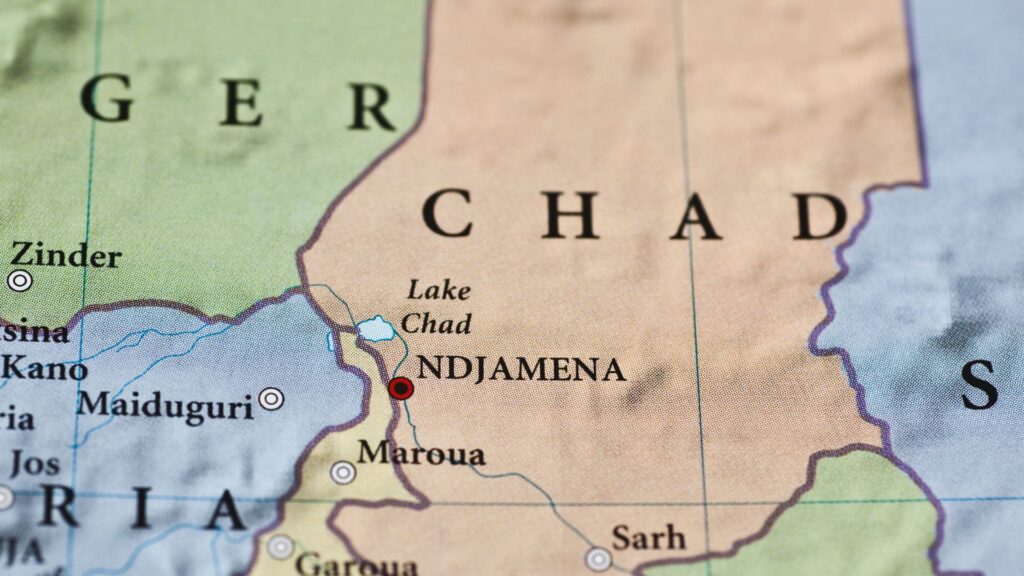Spending 48 hours in Chad is an adventure that offers a glimpse into the country’s unique culture, landscapes, and history. From ancient desert formations to vibrant markets, this short visit can introduce you to some of the most fascinating Chad tourist attractions.

If you’ve enjoyed Kach’s 48 hours in Tunis, Tunisia or 48 hours in Niamey, you’ll be surprised. Chad is a different kind of journey. It’s more rugged, remote, and raw. It’s for travelers seeking deep cultural insight and untouched natural wonders in the heart of Africa.
If you plan to work and travel long-term in Africa, don’t miss TMTG’s new eBook: The A-Z on Becoming a Digital Nomad. It’s a practical guide with tips on documents, gear, and real advice for location-independent living.
From national parks like Zakouma National Park to prehistoric wonders like the Ennedi Plateau, Chad is full of natural and cultural treasures. Bustling capital city and stunning mountainous ranges, there’s so much to explore.
Chad is home to geological marvels such as Emi Koussi, the highest peak in the Tibesti Mountains, which rises more than 3,400 meters above sea level. In fact, the elevation of some areas in Chad offers breathtaking views and cooler climates, especially between December and August.
There’s much to explore, from its bustling capital to the beautiful landscapes. Let me take you through a journey of unique experiences, amazing sights, and, yes, a few challenges along the way!
Day 1: Discovering N’Djamena
I arrived in N’Djamena early in the morning. The city was lively. People chatted in the streets and shared laughter.
I started my day at the local market. The place was filled with colorful fabrics, spices, and joyful vendors. The locals were welcoming. Their smiles made the experience even better.
That afternoon, I visited the National Museum of Chad. It offered a deeper look into the country’s rich culture, flora, and fauna. I learned about different ethnic groups and saw ancient tools made from clay.
The museum also shared stories of Chad’s past. It highlighted how the people survived years of struggle, including conflict and rebellion. I admired their hope and determination.
Day 2: A Glimpse of Chad’s Countryside
On my second day, I explored more rural areas. So I headed out to a nearby village. I also passed through quiet parts of the country where the Sahara Desert stretches wide.
One of the highlights was visiting Guelta d’Archei. It’s a desert oasis hidden among cliffs. Here, Nile crocodiles swim in still pools. Camel races also take place nearby and attract many visitors.
I continued to the Ennedi Desert, a protected area full of wonders. The site is famous for its ancient rock art and prehistoric cave paintings. The Ennedi Plateau and surrounding peaks took my breath away.
Later, I made my way to Zakouma National Park. This park is home to elephants, lions, and giraffes. It has bounced back from heavy poaching and now plays a key role in protecting Chad’s wildlife.
I also spent time in Moundou, the second largest city. It’s known for the Gala Brewery, which makes Chad’s most popular lager.
In Am Timan, I visited lively markets. The city also provides access to several national parks. It gave me a different view of life in southern Chad.
Challenges and Reflections
Recent headlines show that Chad still faces unrest. Conflict involving rebels continues in several areas. Tourists and civilians need to be careful. I stayed alert and relied on local contacts and news updates.
Life in Chad is different from that in the United States. Healthcare and services are limited. Still, the people are strong and kind. Their resilience left a deep impression on me.
A Note on Safety and Travel Tips
Chad is not the easiest place to visit. Be alert. Always check the latest travel advisories and follow your guide’s instructions.
Know the local laws. Stay out of high-risk areas. Be careful with personal details when speaking with strangers or officials.
Having travel health insurance is a must. It helps protect you in emergencies and is often required by tour operators or border officials.
Don’t forget a power bank to keep your phone charged while exploring. Some remote areas have limited access to electricity. You’ll want to stay connected, especially if you’re using Yesim (Code: KATRIN8414).
Even with the risks, my 48 hours in Chad were unforgettable. The warmth of the people, the raw beauty, and the lessons I learned made it worth every moment.
So come and visit this incredible destination in Central Africa. With smart planning, it can be one of the most eye-opening trips of your life, measured in human connection and memory!
FAQ
Because Chad is landlocked and has large desert areas, it’s nicknamed the “dead heart of Africa.” But the country is full of life, with rich culture and natural beauty.
Chad can be risky for tourists due to crime and safety issues. Travel with caution, avoid isolated areas, and use a trusted local guide.
Tourists come to see the Tibesti Mountains, Lake Chad, and ancient desert art. It’s a rare destination for nature lovers and adventure seekers.
About The Writer

I’m Cyrine, a 19-year-old Filipina writer juggling college, freelance work, and the messy, exciting path of becoming a digital nomad. I didn’t start out with a full savings account or fancy gear. Just a borrowed laptop, a few writing gigs, and the decision to try. In this column, I’ll share honest stories, budget travel tips, and lessons I’m learning as a Gen Z from the Philippines chasing freedom through remote work. Whether you’re curious about freelance life, saving for your first solo trip, or figuring out how to make travel more than a one-time escape: this is your space, too.

